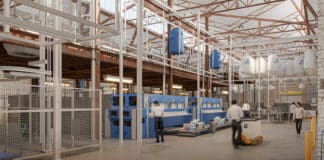By Andrew Mawson
Too often, organizations have a one-dimensional view of relocation. They see it as nothing more than the act of getting from “physical point A” to “physical point B”. It’s a costly and unavoidable burden that gets outsourced to a moves specialist. Many give little, if any, thought is ever given to the potential for relocation projects to drive innovation and trigger bigger change.
Business transformation through relocation might seem like a lofty idea, particularly to disciplines that are traditionally responsible for these projects, but the act provides a rare opportunity for facility and real estate leaders to look up from the day to day and help their organizations reinvent, modernize, and evolve to new behaviors and culture. Without a proper strategy in place, organizations are doomed to repeat designs, services and processes — whether they work or not.
My firm, Advanced Workplace Associates (AWA) has been providing support to organizations looking to make more efficient use of their real estate assets for more than a quarter of a century. In recent years, however, we’ve noticed an attitudinal shift. Now it seems the employer onus is on providing work “experiences” that support well-being, unleash the potential of the employees, and even assist recruitment by showcasing their unique personality, values, and heritage — as opposed to focusing solely on cost-saving initiatives, especially for businesses that rely on the cognitive athleticism of their knowledge workers.
 Where output used to be measured in the number of goods produced, for a vast number of organizations in the knowledge economy, productivity now hinges on the quality of the ideas shared and the conversion of these to commercial value. This explains why office relocation should now be treated as a vehicle for business transformation — a catalyst for the move to a more dynamic, fluid, and adaptable work model that encourages social cohesion, information sharing, and trust.
Where output used to be measured in the number of goods produced, for a vast number of organizations in the knowledge economy, productivity now hinges on the quality of the ideas shared and the conversion of these to commercial value. This explains why office relocation should now be treated as a vehicle for business transformation — a catalyst for the move to a more dynamic, fluid, and adaptable work model that encourages social cohesion, information sharing, and trust.
However, any move to a new way of working (and change management in general) must be guided by a thorough understanding of the organization’s unique business pressures and employee needs. Ditching a rigid system of “fixed desks” for activity-based working (ABW), for example, requires a new mix of workspaces, workstyles, technologies, and attitudes that allow people to concentrate, collaborate, or socialize when they need to. Ultimately, relocating is a precious opportunity to drop bad habits and adopt new, effective practices.
It’s important to remember that a move to ABW is impossible without the right technology in place. Legacy IT systems and communications tools won’t support the new way of working and increased mobility of staff. So, another crucial step is to appraise existing deployment of tech and then calculate which IT apps are necessary for the transition. Business messaging apps like Slack and Microsoft Teams will help people to communicate with each other, as they jump between different locations and workstations, from hot-desks to coffee shops.
Of course, successfully relocating to a digitally centered, ABW workplace takes more than just the right apps; it requires substantial changes to the culture, too. If the goal is to promote inclusiveness, openness, and greater social cohesion — which is what Advanced Workplace Associate’s research tells us — then the transformation must be managed in a similar way. Those responsible for managing the workplace change will need to be open and honest, encourage friendly conversations, and plan social events to move the dial. The aim should be to establish how the change is likely to impact individuals but also why it is necessary for the bigger picture — and what they themselves can get from the change. Everyone is different, of course, so each person has a different “win-loss equation” from the change.
Once employees’ questions have been answered — and organizations are armed with a more refined understanding about the change backed by statistical data — a carefully selected community of “change champions” should be formed and trained to be experts in the change and how people adapt. These teams will engage in deep conversations with colleagues to help them understand the truth of their change as well as overcome their worries. People should be supported by well-briefed leaders who will be the conduit of the transformation.
Workplace change of this nature must also be understood as a trade-off. Some will see moving to a new, more mobile way of working as stripping people of things that they’ve become used to and comfortable with, but the new conditions will give them more choice over where they work, better access to colleagues, and the most effective tools to do their job. Old habits not only die hard but also influence people’s mental model of the world that keeps us all “safe”.
Finally, it is important to note that this kind of change doesn’t happen overnight. Too many CRE managers mistakenly believe that their role in the change management process is some communications activity, a few slides, and the odd workshop — while the project team is disbanded way too soon. In this all-too-common scenario the space might have changed, but people will drift back to old patterns .
With the right strategy in place, a new workplace can be a tool for business transformation and change management. Relocating, then, is the catalyst that bring this to life, giving your organization the opportunity to think about its needs and how a new workplace can meet them.
 Mawson is leader of global workplace consultancy Advanced Workplace Associates (AWA) and founder of Workplace Week New York. From a general management career in the IT industry, his unrelenting curiosity for the transition to new models of work led to the founding of AWA in 1992. Since then, he has worked with some of the world’s leading organizations on their journey to explore and implement new forms of working and workplace.
Mawson is leader of global workplace consultancy Advanced Workplace Associates (AWA) and founder of Workplace Week New York. From a general management career in the IT industry, his unrelenting curiosity for the transition to new models of work led to the founding of AWA in 1992. Since then, he has worked with some of the world’s leading organizations on their journey to explore and implement new forms of working and workplace.





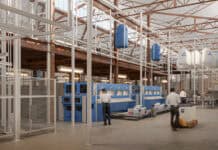
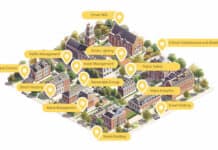
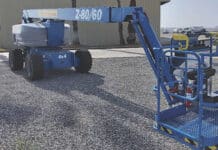






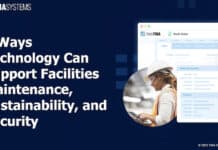




![[VIDEO] Job Order Contracting: Accelerating the Projects that Matter](https://facilityexecutivemagazine.kinsta.cloud/wp-content/uploads/2024/05/maxresdefault-324x160.jpg)
